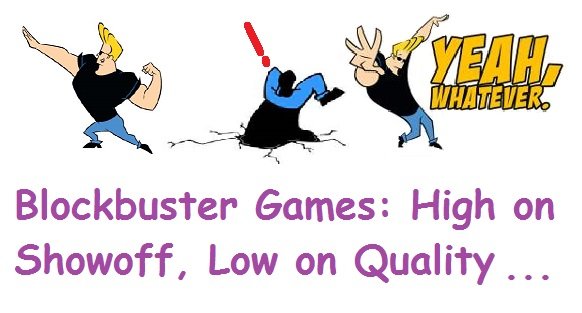
It has become a rather annoying trend these days that some otherwise mediocre movies get a grand reception and a tremendous initial response from the audience (in most cases, within few days of their release) – because their fascinating trailers manage to create that pre-release hype which translates into quick viewership. And then there is also a clever marketing and paid reviews that play a role in heightening expectations of the audience.
But thanks to social media and other platforms that allow sharing of information online. Such movies fail to sustain that viewership for a long time. Sometimes, not even more than a week. And in the end, they just find themselves lost in the oblivion along with other bad counterparts.
Game Releases – The World Of Hype And Beyond
Well, things are not much different when it comes to video games – many of which attain recognitions of being blockbusters even before their releases! The only difference with the torment of the naive movie-goer to that of a video game enthusiast is the amount of time and money invested in the process of watching a movie and the amount of torment and torture that the gamers need to go through by believing in the hype and the reviews – which vary in the range of being blatantly false, clandestine, and at times smart/paid.
The fact is that it’s more common to encounter two entirely world apart feedbacks on the same video game; here an ‘expert’ review can be dubious to a great extent.
Because a game could be termed excellent by a reviewer based on its graphics and overall expression, but at the same time, the same game could prove nauseous for someone who was looking for a better storyline or finish.
But simply because here a bunch of dedicated gamers suffer through those difficult moments of mental torture to finish the game at least once to reach a conclusion on the overall quality, the resulting agony almost equates to scale of its outburst at unhindered social and game forums. So, in tandem with the higher standard shelf life of a game (in comparison to a movie) the compounding negative publicity and the scale of those augmenting negatives may prove to be more detrimental to the publishers and other stakeholders of the ill-fated game title.
Complication Leads To A Lot Of Confusion
For any medium of entertainment to thrive, it has to earn new fans on a regular basis. Well, that is not a problem when it comes to other mediums of entertainment like film, music or literature – but when it comes to gaming, it can prove to be a tough nut to crack.
Just like you take the time to learn how to use a computer or camera, video games also force a new gamer to find out how to play them because it can be a tough task to be familiar with. To understand this, let’s take the example of the recently released Dragon Age: Inquisition game (developed by BioWare). In this game, you have to go through an assemblage of confusing and complicated menus to upgrade your sword or to mix different power options. The whole endeavour proves nothing less than a Herculean Task, which is enough to put many gamers off or to leave you with a feeling of disgust. Still, the game publisher did not find any reason in ameliorating the problem, before making an official release.
A Recurring Fever
It would be interesting to find out the exact reason that really forces or drives the gaming industry to make some bizarre decisions – again and again.
A few years ago, gamers were left in a lurch about the sudden ending of Dragon Age Studio and BioWare’s game Mass Effect 3. Actually, for many gamers, the ending was not thoroughly justified by the makers of the game. To make up for that grave mistake, BioWare released a revised version of the game with an expanded ending. This further made the situation murkier as the gamers questioned the very sanctity and intent of the game. Developers brought in some quick changes on the forefront to make the game more competitive, albeit with new patches.
But, in the end, gamers felt bad because it does not make much sense to tinker with the main story of the game post-release. Instead, they could have left the story like that and done a lot better job by fixing time-wasting menus in the case of Dragon Age: Inquisition. Sometimes, small changes are more important than a few big changes because the ultimate goal is to keep the gamers happy.
Blunder After Blunder!
Amidst all this, small and well-designed indie games have been gaining more takers than blockbuster games because they stick to their storyline and don’t test the patience of gamers at least not with the dubious game-play.
The year 2014 saw the worst of this when leading publishers released many over-hyped games in poor states. In fact, things went haywire when Microsoft and Sony released their buggy games in the form of Halo Master Chief Collection and Driveclub respectively; and with these leading publishers eventually requiring an apology to the gamers.
What’s In Store?
It is simply impossible to release bug-free games these days given the kind of complication related to graphics and evolved stages in the games along with the user expectations from the games. But that is still OK to a great extent.
These big publishing houses can get our benefit of the doubt, and we would not mind a bit of unpleasantness, till they show enough interest in improving upon their effort and remain from cheating their subscribers by buying reviews.
Big or small, game publishers must subscribe to competent game testing and QA initiatives to retain the trust of their subscribers and remain relevant in the future.
Article by,
Laxmikant B. Thipse
Founder & CEO
GameCloud Technologies Pvt Ltd
